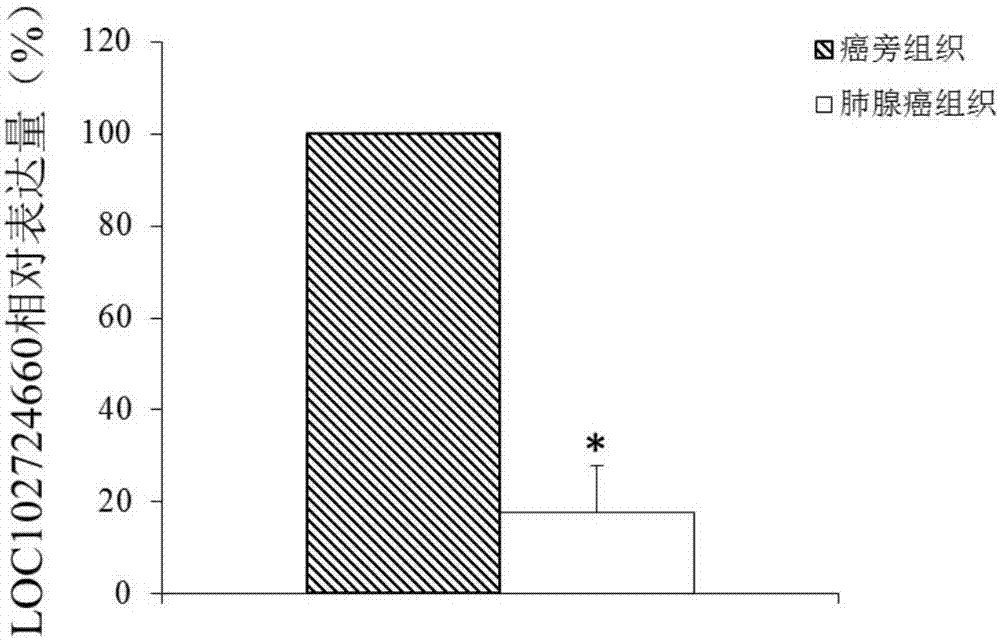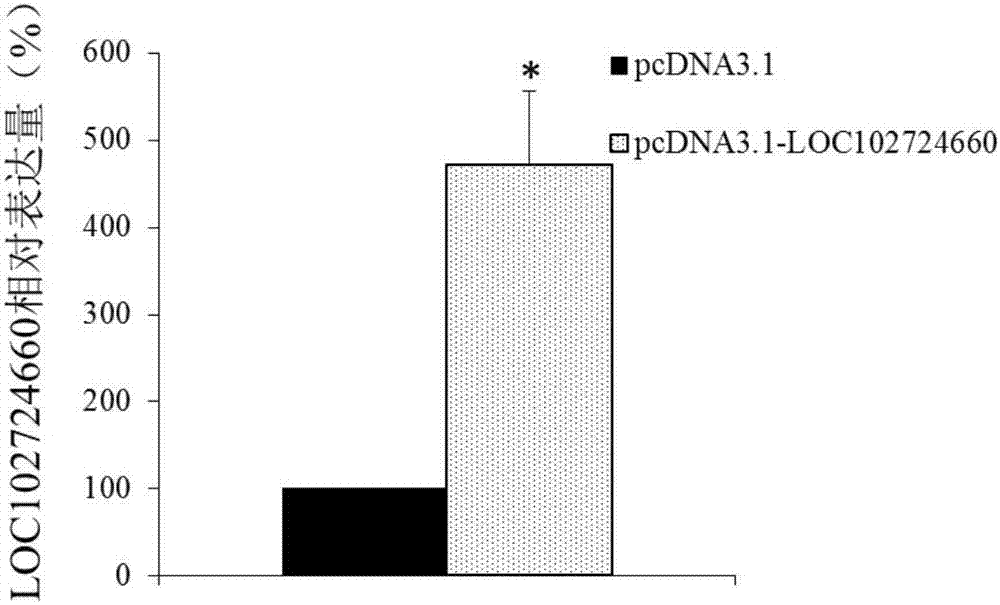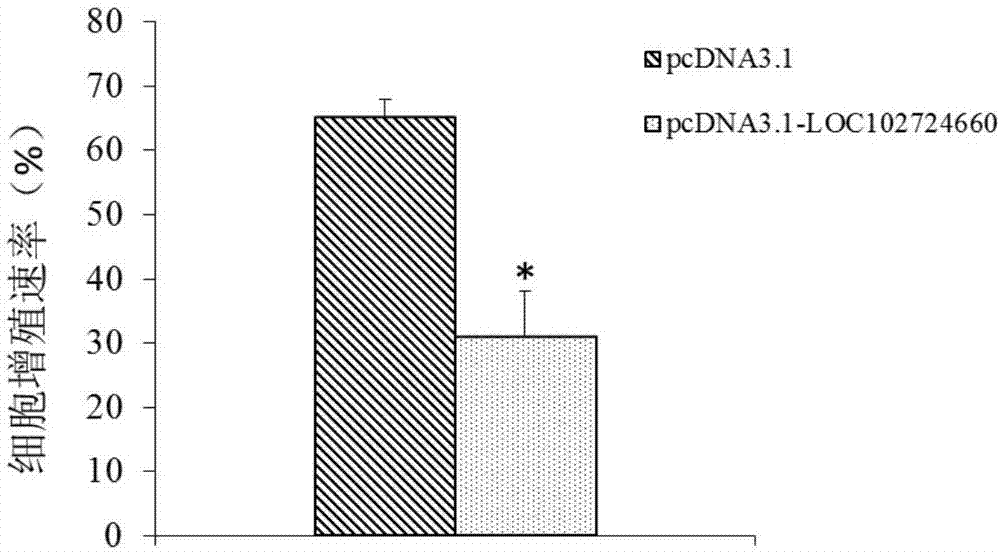Long-chain non-coding RNA marker for diagnosing lung adenocarcinoma
A long-chain non-coding, lung adenocarcinoma technology, applied in the field of biomedicine, can solve the problem of unknown function of lncRNA, and achieve the effect of providing survival rate
- Summary
- Abstract
- Description
- Claims
- Application Information
AI Technical Summary
Problems solved by technology
Method used
Image
Examples
Embodiment 1
[0049] Example 1 Screening of differentially expressed non-long-chain coding RNA
[0050] 1. Materials:
[0051] The surgically resected cancer tissues and paracancerous tissues of 8 patients with primary lung adenocarcinoma were used as experimental samples. All cancer tissues were pathologically confirmed as lung adenocarcinoma. All patients with primary lung adenocarcinoma had not received radiotherapy and chemotherapy before operation, and the clinical data of all cases were complete.
[0052] 2. Obtaining tissue RNA
[0053] Total RNA was extracted from tissue samples, and the concentration and purity of the extracted RNA were detected by Nanodrop2000, the integrity of RNA was detected by agarose gel electrophoresis, and the RIN value was determined by Agilent2100. The total amount of RNA required for a single library construction is 5ug, the concentration is ≥200ng / μL, and the OD260 / 280 is between 1.8 and 2.2.
[0054] 3. Remove rRNA
[0055] A part (>24%) of the lo...
Embodiment 2
[0079] Example 2 Large sample verification screened out differentially expressed genes
[0080] Based on the results of previous high-throughput sequencing and according to the size of P value, we selected LOC102724660 for verification.
[0081] 1. Sample collection
[0082] According to the method of Example 1, 45 cases of lung adenocarcinoma tissues and corresponding paracancerous tissues were collected.
[0083] 2. Validation at the mRNA level
[0084] Reagents: Reverse transcription kit (DDR037A) was purchased from Treasure Bioengineering (Dalian) Co., Ltd. SYBR Premix ExTaq for real-time quantitative PCR (polymerase chain reaction) TM (Tli RNaseHPlus) kit was produced by Japan Takara Company.
[0085] 2.1 Extract tissue RNA
[0086] Step is with embodiment 1.
[0087] 2.2 Primer design
[0088] According to the sequences of the five transcripts of LOC102724660, primers were designed by NCBI's primer design tool (PrimerBLAST). The designed primers were suitable for ...
Embodiment 3
[0095] Example 3 Overexpression of LOC102724660
[0096] 1. Plasmid construction
[0097] The cDNA of LOC102724660 was obtained by the method of Example 2, and the amplified sequence was the cDNA sequence of LOC102724660 shown in SEQ ID NO.1. The above cDNA sequence was inserted into the eukaryotic cell expression vector pcDNA3.1, and the obtained recombinant vector pcDNA3.1-LOC102724660 was connected for subsequent experiments.
[0098] 2. Culture and transfection of lung adenocarcinoma cells
[0099] 2.1 Cell culture
[0100] The lung adenocarcinoma cell line A549 was cultured in RPMI1640 medium and 10% fetal bovine serum.
[0101] 2.2 Cell transfection
[0102] (1) The day before transfection, 0.5-2*10 5 Tumor cells were suspended in 500 μl of antibiotic-free medium and seeded into 24-well culture plates.
[0103] (2) On the day of transfection, the cell density should reach 80%-90%. Prepare the following complex A: Dilute 1 μg plasmid DNA in serum-free medium and mix...
PUM
 Login to View More
Login to View More Abstract
Description
Claims
Application Information
 Login to View More
Login to View More - R&D
- Intellectual Property
- Life Sciences
- Materials
- Tech Scout
- Unparalleled Data Quality
- Higher Quality Content
- 60% Fewer Hallucinations
Browse by: Latest US Patents, China's latest patents, Technical Efficacy Thesaurus, Application Domain, Technology Topic, Popular Technical Reports.
© 2025 PatSnap. All rights reserved.Legal|Privacy policy|Modern Slavery Act Transparency Statement|Sitemap|About US| Contact US: help@patsnap.com



